For my recent New York trip, I brought two cameras: the Canon 5D Mark II and the Olympus E-P1. For the first three days, I shot exclusively with the 5D2. I was working at PhotoPlus Expo for Lowepro. I needed to take photos in the booth of photographer activities, and the 5D2 with the 24-105 zoom worked great.
All images by Derrick Story, captured with an Olympus E-P1 with a 17mm f/2.8 lens. High ISOs were used for all pictures. You can see more at the Digital Story Flickr site. Click on images to enlarge.
But on the fourth day, after I had completed my assignment, it was time to hit the streets of Manhattan. And for that gig, I packed my Olympus E-P1 with a 17mm f/2.8 lens and a Jobo GorillaPod. That was it.
I like to go out a little before dusk. This was a problem in the past with compact cameras because they didn't perform well at high ISO settings. But the E-P1 shoots great at ISO 1600, and lately, I've even pushed it to 3200 with solid results. Because it was raining while I was on the street, I needed the speed even more to offset the cloud cover.
My technique is fairly simple. I turned off the LCD viewfinder and framed the shots with my eyes only. The E-P1 is usually hanging around my neck at chest level or positioned at some odd angle to get the shot. About every 15 minutes or so, I'll turn on the LCD, review the recent shots to make sure I'm not screwing up, then turn off the viewfinder and look for another place to photograph. Since the shutter is fairly quiet anyway (then add a little street noise), I don't draw much attention to myself -- certainly less the holding the 5D2 with big zoom lens up to my eyes.
Everything is recorded in Raw. This really helps when trying to control deep shadows and specular highlights. I process the images in Adobe Lightroom 2.5 because it provides excellent Raw decoding for the E-P1. And since the camera handles white balance and color so well, combined with Lightroom's excellent processing, most of my post production is limited to cropping and minor exposure tweaks. This enables me to quickly post the shots online after the shoot is over.
On that Saturday night in New York City, the rain showers gradually broke open into a downpour. By 8:30 pm, I was back in the room sorting my images on a MacBook, and by 10 pm they were online at my Flickr account.
What an enjoyable way to finish off a great trip!
-
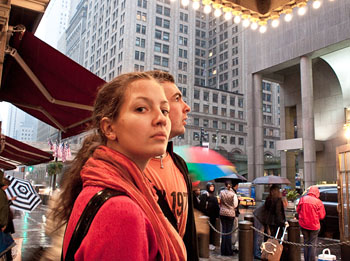
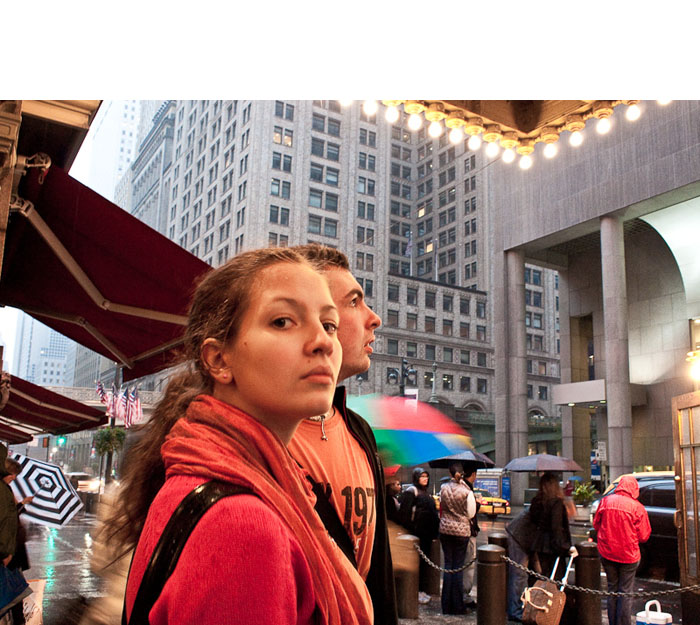
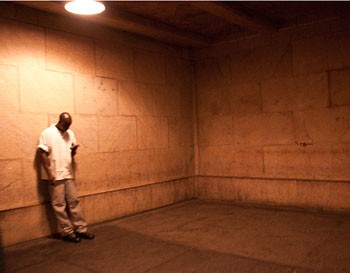
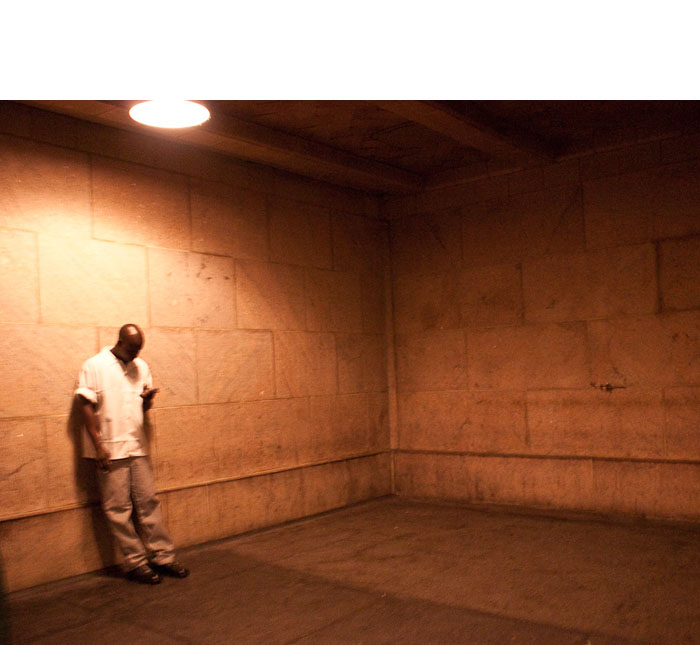
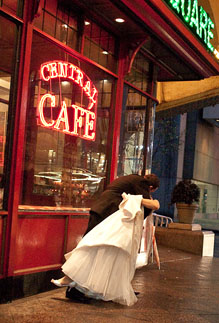
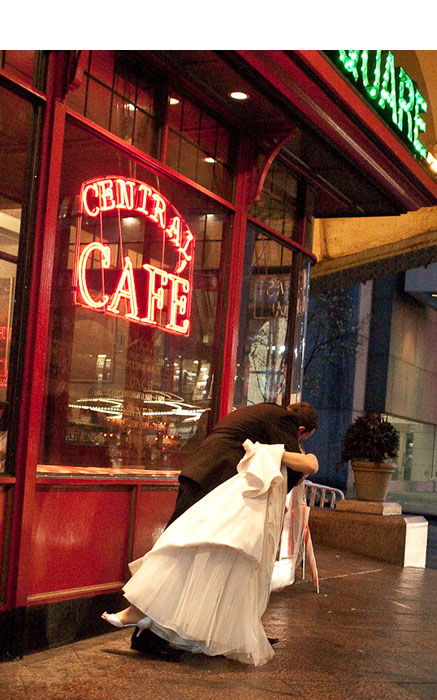












Not bad at high ISOs, probably close to a Nikon D80 (before Nikon got religion and moved to CMOS from CCD), and definitely better than a G10/G11.
As long as you were using the 17mm prime, did you consider using the accessory finder? Or don't you have one (yet)?
Maybe next time you could SilverFX some for the site – I bet the noise would look better in b&w.
Also, it would be useful if your images were available larger than 800x509, even if you had to watermark them to protect them.
Thanks for your comments Mel.
About that 17mm... I do have the optical viewfinder for it, and I like it. But the technique I like best, as I described in the article, is *not* holding the camera up to my eye to frame the shots. In other types of photography (portraits, landscapes) sure.
What I like about this particular lens/camera combination is that the camera truly becomes an extension of my vision. I'm feeling the shots as much as anything else. Yes, there is more loss in this approach. But in this case, the activity itself is as important to me as the final output.
Darn, I wish I had found the setting to turn off the LCD before my just completed month in Europe. Got some great street shooting results in Paris but, it was a constant battle to stay in charged batteries with the drain from the LCD being on. Was using the viewfinder in any case so, LCD wasn't required at all.
Using shooting mode S3 on S-AF to lock in hyper focus was an absolute godsend though. (Gears menu -> AEL/AFL -> Button/Dial -> AEL/AFL -> S-AF -> mode3). Focus on something about 10 ft away for hyperfocus with the 17 at f8.
With the LCD off now, the EP-1 very nearly replicates the Leica street shooting experience.
Yeah, Tom, the LCD turned off is an important ingredient in the recipe. I program the Fn button for quick off and on of the LCD. Not only does it save battery, but it also helps you keep a lower profile.
Great ideas Derrick! I'll have to try shooting with the LCD off during Halloween festivities this weekend. I have the 20mm F1.7 on the EP-1 and I think it will work very well using your technique :-).